When I walk past the salsa aisle in the grocery store I give it the Hand. Like a fed-up mother who doesn’t want to hear it. Or a traffic cop halting a lane of approaching cars. Or a dude who knows that store-bought salsa just doesn’t come close to the real thing.
Spend five minutes reading this post and your reward is a lifetime of giving the salsa aisle the Hand.
Once you perfect the basic formula you’ll never go back to paying five bucks for something that you can do significantly better. Don’t get me wrong, I used to pay that five bucks too, but not anymore.
Key #1: Roast those tomatoes!
First, you must roast the tomatoes.
You have lots of ways to get there. Bake them in the oven at 400F. Toast them on a hot skillet. Put them on a grill.
The common denominator is HEAT.
I typically use the oven at 400F. After 20-30 minutes they’ll look like this:
Same tomato, better flavor.
Roasting lowers the acidity of the tomatoes, making them sweeter. It also concentrates the flavor as some of the internal moisture is now evaporated.
Key #2: Use ratios, not recipes
It's easier to think in terms of ratios instead of blindly following a recipe.
Start by using a 2:1 weight ratio on your Tomatoes VS. Onions for a properly balanced salsa.
Don’t worry, you don’t have to weigh ingredients every time you want to make salsa. Just know that a typical plum tomato weighs approximately 100g (3.5oz), and a largish white onion will weigh 300g (10.5 oz.)
So if we start with 3 plum tomatoes (300g) then we’ll use ½ of a white onion (150g) to approximate the 2:1 weight ratio.
But don’t forget, Mexican cuisine is one of the most forgiving cuisines out there, so there is some wiggle room here if you have to wing it. If you only have regular tomatoes start with 2 tomatoes and half an onion.
Key #3: Add capsaicin incrementally
The final and most important key is what I call Capsaicin Control.
See, everyone has their own preferred heat level. Nobody can tell you how much heat you like in your salsa, only you know that.
But most salsa recipes don’t take into account the wide range of taste buds out there and they end up defaulting to something that is typically too hot for most people.
But what exactly makes a salsa too hot?
Capsaicin is the invisible ingredient in chili peppers that gives them their distinctive heat. When a salsa or hot sauce is too ‘hot’ for you it means the capsaicin level is too high for your taste buds.
The highest concentrations of capsaicin will reside in the seeds and pith of chili peppers. That’s why in some recipes there will be recommendations to take out the seeds if you want a lighter version.
But there’s an easier way.
The first few times you make salsa at home you are going to add the capsaicin incrementally, i.e. Capsaicin Control.
How? By cutting the jalapeno into quarters and adding one quarter at a time until it tastes ‘right’ to you.
That meeting point where the heat of the capsaicin is properly balanced with the flavor of the ingredients is what makes Mexican food taste MEXICAN.
Got anything I can taste test?
OK, let’s put the 3 Keys into practice. We’re going to focus on the Mother of all Salsas: the lauded Tomato-Jalapeno salsa.
Using the 2:1 weight ratio we'll stick with 3 plum tomatoes and half an onion. Plus we’ll need 1 garlic clove and 1 jalapeno, and salt to taste.
Prepare the tomatoes by rinsing and de-stemming.
My default roasting method is the oven at 400F.
In 20-30 minutes they’ll look like this.
Into the blender they go along with ½ white onion, 1 clove garlic, and only ONE QUARTER of the jalapeno.
Pulse blend (so it stays chunky) and taste for heat level. Not enough? Add another quarter of the jalapeno, blend, and give it a taste. Closer?
Keep going until it tastes ‘right’ to you. Eventually you’ll get good at knowing where your sweet spot is. For me, I typically add half the jalapeno, taste, and then add another quarter if I need it.
You can add salt to taste here but the majority of the time I make this I don’t add salt, it’s usually rich enough for me.
This will make approximately 2 cups of the best salsa you’ve ever had. Roasted tomatoes blended with capsaicin moments ago is your new secret weapon.
You can always double or triple the core recipe if you want to make bigger batches. It will keep in the fridge for a few days.
One other side benefit of roasting the tomatoes is that it makes the salsa warm. You’ll get instant credit for slaving away in the kitchen all day when you present this to your Significant Other. Something about warm salsa generates awe from those of us who grew up eating cold store-bought salsa.
Speaking of store-bought salsa…Please say hello to my friend the Hand.
Still hungry?!
Want to receive Mexican Please recipes via email when they are posted? Sign up below to subscribe. All recipes are spam free.


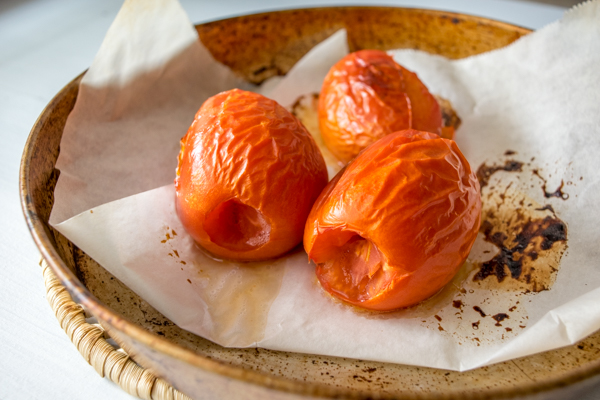
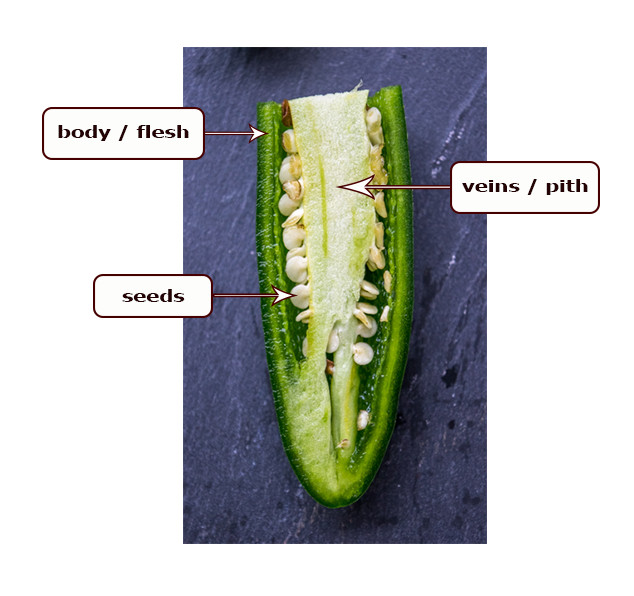
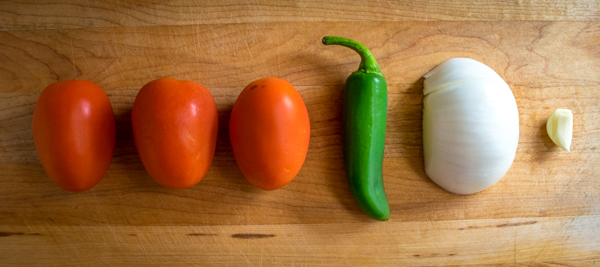
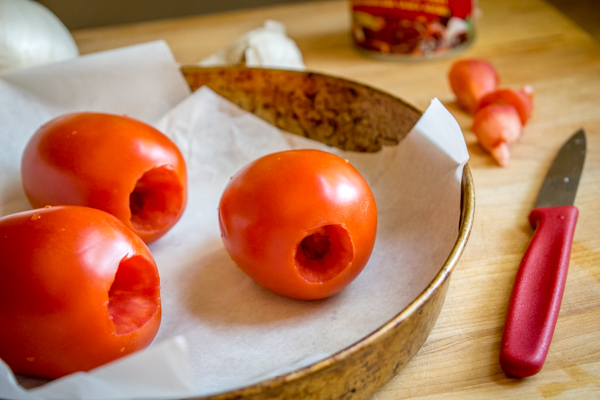
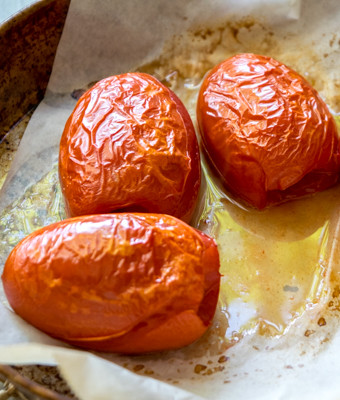
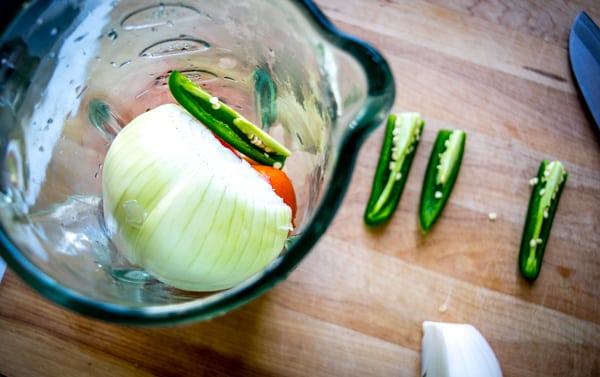
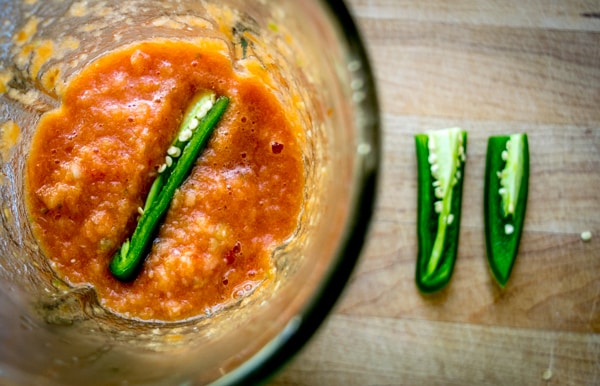
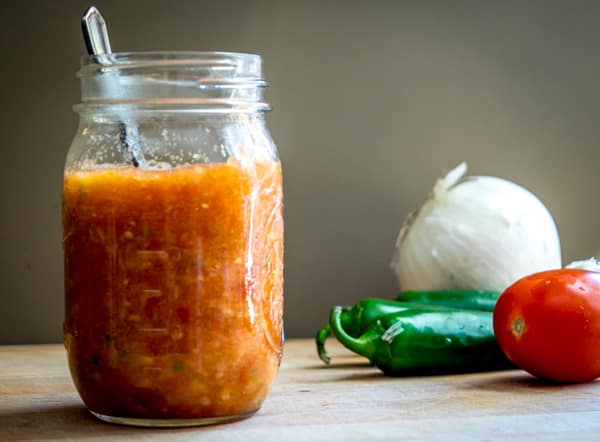
Chris
Great info! Is there a recommendation on cilantro if we want to add it?
Patrick
You can add 5-7 sprigs of cilantro as a starting point, then taste test from there. Also, I usually use the upper stems that hold the leaves together but twist off and discard the bottom portion of the stems. Cheers.
How To Chop Cilantro
Chris
Just gave your recipe a shot and it’s a winner! Thank you very much!!!
Patrick
Thanks Chris!
Tracy Taylor
Thank you so much for sharing your knowledge and recipes. The section on chiles has been powerful for me! I feel confident I can tackle these lovelies by using them appropriately. I am fortunate to have access to a small Mexican specialty store 5 minutes from home and having the right ingredients should increase my odds of being successful on first attempt. Okay, cue the Mariachi band cuz this Chica is ready to cook!
Patrick
Yeah go for it Tracy, it has been one of most satisfying endeavors of my life. Tastes good too 🙂 Cheers.